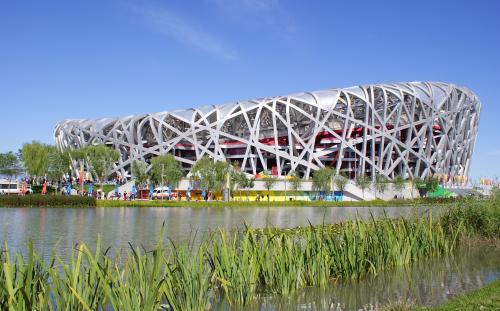In recent years, China's building steel structure has achieved unprecedented development, building steel structure in the national economic construction occupies a very important position. Due to its many advantages, such as light weight, short construction period, strong adaptability, good appearance and convenient maintenance, steel structure has been applied more and more widely. The development of steel structure is closely related to the output of steel. China has become a major steel producer in the world. In 2006, China produced 410 million tons of steel, of which the output of steel structure reached 140 million tons. The steel structure industry in the fields of energy, transportation, metallurgy, machinery, chemical industry, electric power, construction and infrastructure construction has become the pillar of national economic construction. Industry and civil buildings such as light steel structure, space steel structure, high-rise steel structure, bridge steel structure and residential steel structure are springing up all over the country.
At the same time, more and more thick steel plates are used in building steel structure fabrication, For example, the thickness of rolled h-shaped steel wings used in Beijing new poly building project is up to 125mm (ASTMA913Gr60), and the maximum thickness of steel plates used in the national stadium (bird's nest) project is up to 110mm (q460e-z35). The application of a large number of thick steel plates in steel structure engineering promotes the development of welding technology of thick steel plates and enriches the range of construction steel.
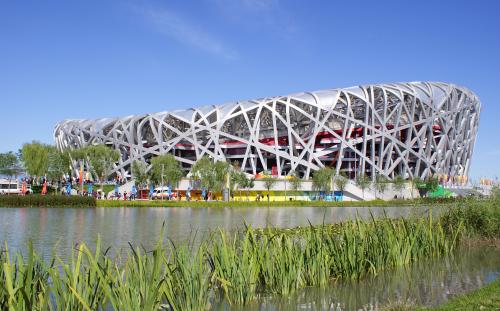
Thick plate welding
When welding thick and super-thick plates, the amount of metal deposited by filling welding materials is large, the welding time is long, and the total heat input is high. High weld constraint, large welding residual stress and large post-welding stress and deformation. Hot and cold cracks easily occur during welding.
Before welding, the temperature of steel plate is lower, when start welding, the temperature of arc is as high as 1250-1300 C. The temperature distribution of thick plate is not uniform under the condition of sudden change of plate temperature- cold and hot, which makes the heat affected zone of weld easy to produce hardening-martensite structure, brittle weld metal and increasing tendency to produce cold cracks, in order to avoid this, it is necessary to conduct heating before thick plate welding
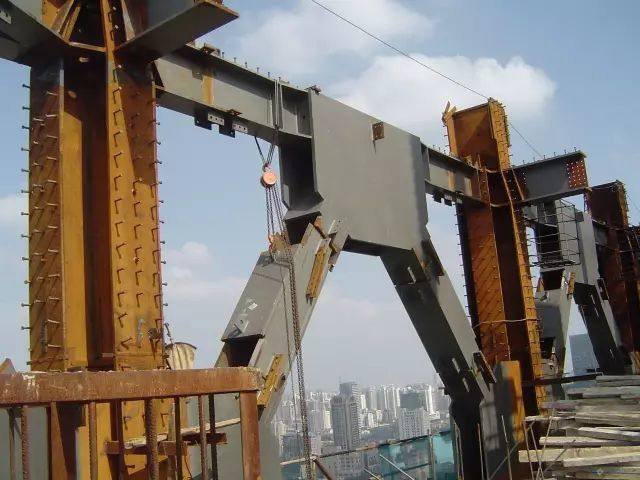
In the actual fabrication, the welding process should be controlled to prevent welding cracks.
1. Position welding is the easiest part of thick plate fabrication. Because the temperature of the positioning weld is quickly cooled by the surrounding "cooling medium" during the positioning welding of thick plate, the local excessive stress concentration is caused, the cracks are produced and the material is damaged. The solution is to improve the preheating temperature and increase the length and height of the positioning weld in the positioning welding of thick plates.
2. In the process of thick plate welding, one of the important technological principles adhered to is multi-layer and multi-pass welding, and wide-pass is strictly prohibited. The result of wide swing welding is that the restraint stress of base metal to weld is large and the strength of weld is relatively weak, which easily causes cracking or delayed cracking of weld. The advantages of multi-layer and multi-pass welding are that the former weld is a "preheating" process for the latter weld, and the latter weld is equivalent to a "heating and insulation" process for the former weld, which effectively improves the stress distribution in the welding process and is conducive to ensuring the welding quality.
3. Inspection during welding process: Thick plate welding is different from medium and thin plate welding, it takes several hours or even tens of hours for thick plate welding to complete a component. Therefore, it is particularly important to strengthen the intermediate inspection of welding process, so that problems can be found in time. Intermediate inspection can not stop welding construction, but rather construction and inspection. If in the inspection process, carefully check whether there are cracks, timely detection, timely processing.
4. After butt welding, the welding seam and the local base metal in the range of 100-150 mm on both sides should be heated immediately. When heating, the infrared electric heating plate should be used. After heating the temperature to 250~350 C, use asbestos to cover it and keep it warm for 2 to 6h, then cool in the air. Such post-heat treatment can make hydrogen leak out rapidly from penetrating molten pool due to improper cleaning before welding or improper flux baking, so as to prevent hydrogen-induced cracking in weld and heat-affected zone.
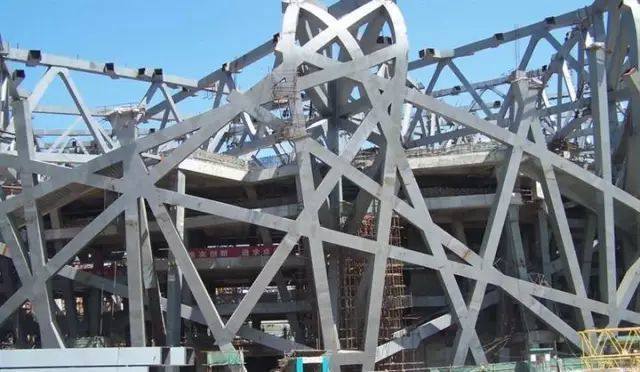
Control of welding deformation and welding stress of thick plate
During welding, the deformation of thick plate after butt welding is mainly angular distortion. In actual fabrication, in order to control deformation, it is often necessary to first weld a part of the weld bead on the front side, then turn over the workpiece, after carbon arc air-gouging, the weld bead on the back side is welded, and then turn over the workpie gain, thus reciprocating. Generally speaking, three to five layers can be welded after each turn, until the front of each weld is fully welded. At the same time, it is necessary to observe the angular deformation at any time during welding, and pay attention to turning over at any time, so as to reduce the welding deformation and internal stress of the weld as much as possible. In addition, a use jig to restrict the components so as to control the deformation during fabrication, this method is generally applicable to the special-shaped thick plate structure. Because of the peculiar shape of thick plate special-shaped structure and the different size of section and cross-section, it is difficult to guarantee the dimension accuracy under the free state. So it is necessary to make jig according to the shape of the component, and make assemble, position and weld the component on the jig to control the welding deformation.
Choosing and controlling the correct welding sequence is an effective measure to prevent welding stress and one of the most effective methods to prevent welding distortion. According to different welding methods, different welding sequence is made, and submerged arc welding generally adopts reverse method and backward method. Symmetry and dispersion uniformity are used in CO2 gas shielded welding and manual welding, and the principle of correct welding sequence is "dispersion, symmetry, uniformity, and restraint reduction".
It is an objective law that instantaneous stress occurs during welding, residual stress occurs after welding, and residual deformation occurs at the same time. In general, the emphasis is on controlling deformation in the fabrication process, measures are often taken to increase the rigidity of the welded members in order to reduce the deformation, while the instantaneous stress and welding residual stress are neglected. For structural components with large rigidity and thick sheet metal, although the residual deformation is relatively small, it will produce huge tensile stress and even lead to cracks. In the absence of cracks, the internal force of the residual stress will be homogenized when the structure is subjected to load, which often leads to instability, deformation and even failure of the components. Therefore, the control and elimination of welding stress is very important in the manufacturing process.
The aim of controlling stress is to reduce the peak value of stress and make it uniform.
When assembling and welding components consisting of more parts, the welds with larger shrinkage should be welded first, and then the welds with smaller shrinkage should be welded according to the shape of the components and the layout of the welds. Principle of welding seam on parts with larger restraint and can not shrink freely at first, and then welding seam on parts with smaller restraint and can shrink freely at last during steel fabrication.
In order to reduce the excessive heat loss of the input welding and avoid cracks in the crystallization process of the weld, when the thickness of the plate reaches a certain thickness, preheating should be carried out before welding, and heating should be carried out in a certain range around the weld. The heating temperature depends on the thickness of the plate and the carbon equivalent (CE) of the base metal.
When welding a seam after preheating, the temperature in the weld area is very high, with the weld running, the phenomenon of thermal expansion and cold contraction will inevitably occur in the zone, This area only accounts for a small part of the cross section of the component, while other parts of the base metal are in the state of cooling (normal temperature), which produces huge rigid restraint on the welding area, resulting in great stress and even cracks. If the symmetrical part of the weld zone is heated at this time, the temperature is slightly higher than the preheating temperature, and the heating temperature is always accompanied by the whole welding process, the above stress situation will be greatly reduced, and the deformation of the component will be greatly improved. Although some measures can be taken to control the welding stress, there are still considerable stresses in most thick plate components after welding, which need to be baked at the back or both sides of the weld to eliminate the residual stress.
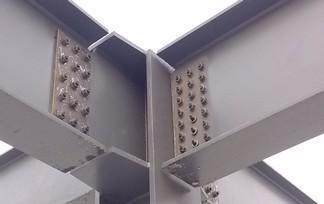
With the rapid development of physics, chemistry, metallurgy, materials, electronics, computer, automatic control and other disciplines, the welding technology of building steel structure in China has made great progress and development. With the continuous emergence of new technology, new materials, new equipment and new technology, the manufacturing and installation welding technology of building steel structure in China will inevitably develop. Get faster and better development. New technologies such as: new digital intelligent arc welding inverter power supply, laser welding and cutting, ultra-high voltage electron beam welding, welding robot system, 4C control technology of steel structure production, namely computer aided design (CAD), computer aided processing (CAM), computer aided inspection (CAT), computer aided evaluation (CAE). CAE and others will step into the field of building steel structure, so that the welding technology of building steel structure will be promoted to a new level.
Personal experience, I hope this article will be helpful to Chinese steel structure manufacturers and welded structural parts manufacturers.

